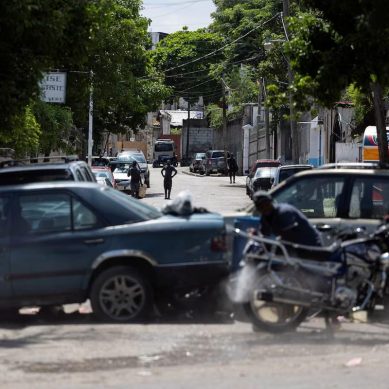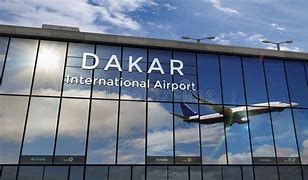
At around 5:30 pm Moscow time on August 23, the Embraer Legacy 600 private business jet took to the skies. Launching from an airport near the Russian capital, the 13-seater plane, which has a white body and blue tail, has been linked to Yevgeny Prigozhin, the head of the brutal Russian mercenary outfit Wagner Group.
At 5:46 pm, once the plane was clear of Moscow – an area where location-tracking GPS signals are frequently blocked – receivers belonging to flight-tracking network Flightradar24 started picking up signals from the Embraer Legacy. For the next 34 minutes, Prigozhin’s plane was sending out data about its altitude, speed and autopilot settings that allowed its movements to be tracked.
During this time, the Embraer Legacy appeared to be fine. It reached a cruising altitude of 28,000 feet before briefly climbing to 30,000 feet, and it was traveling at around a ground speed of around 513 knots. Its flight path headed northwest, away from Moscow and in the direction of Russia’s second-largest city, St Petersburg.
At 6:19 pm, around 30 seconds before the plane stopped transmitting data altogether, it plunged 8,000 feet toward the ground. Its last recorded altitude was 19,725, as it flew by the Kuzhenkino village in the Tver Region. The descent was “dramatic,” according to Flightradar’s analysis.
Since the plane smashed into the earth, killing all those onboard, Russian aviation services, Telegram channels linked to Wagner, and the country’s state-controlled media have reported that Prigozhin was listed as a passenger. The country’s aviation agency named the Wagner boss among 10 people on the plane, along with other senior Wagner members, including cofounder Dmitri Utkin and three crew members.
Officials, according to Russian state media, are investigating the crash and what may have caused it, and have reportedly recovered the bodies. It has been widely speculated that the plane could have been shot down by Russian air defences, perhaps in response to Prigozhin’s attempted coup two months ago.
No evidence to back this up has been presented yet, with Russian president Vladimir Putin saying he has sent his condolences to the families of the dead and investigations are looking into what happened. (One anonymous Western intelligence official told The New York Times that they believe Prigozhin was on the plane. Meanwhile, US President Joe Biden has said there is “not much that happens in Russia that Putin’s not behind.“)
Thanks to Russia’s heavy censorship and propaganda machines, the verifiable truth of what happened to the Embraer Legacy may never be known, experts say.
Amid the dramatic and unfolding incident, there has been a void of official information and a swirl of unconfirmed theories. However, the event highlights how powerful Russia’s grip on its information space is: The country controls its media, has banned independent outlets, and tightly censors the internet and online services available in the country.
The episode also continues to show how useful even small amounts of open source information – such as photos or videos posted to social media and open source data, such as flight information – can be in establishing what may have happened. Open source intelligence, known as OSINT, is already being inspected by researchers.
FlightRadar is one of a tiny number of sources of verifiable information about the fate of the Embraer Legacy 600 and, by extension, those onboard the plane. Since the plane stopped transmitting data, one video has emerged on social media showing a plane in pieces dramatically falling toward Earth.
OSINT investigators have confirmed that this happened around the Tver region, the plane’s last known location, by comparing landmarks in the video such as trees and metal pylons, with existing photos of the location. Another video of the crash site reportedly shows parts of the wreckage matching previous images of Prigozhin’s Embraer Legacy 600. (However, one false video posted to X, the platform previously known as Twitter, has been viewed around a million times.)
Elise Thomas, an investigator at the Centre for Information Resilience, a nonprofit that conducts open source research to expose human rights abuses and counter disinformation, says that within hours the FlightRadar data and confirmed videos from the site gave people a glimpse of what may have happened.
“But at the end of the day, we are probably going to be dependent on Russian sources at some level,” she says. These could include Russian government agencies or Telegram channels, which may not be trustworthy. “In some ways, maybe the most likely outcome here is that we just never know the absolute truth of what happened,” she says.
Getting factual information out of Russia isn’t easy – and it has become harder since the country’s full-scale invasion of Ukraine started in February 2022.
“The information space has been tightening over time,” says Natalia Krapiva, tech-legal counsel at digital rights nonprofit Access Now. Over the past decade, Krapiva says, the Kremlin has passed laws and taken other measures to control the internet, censor what people can access, throttle the media, and outlaw independent reporting.
Almost all independent media in Russia has been “banned, blocked” or declared “foreign agents” since February of last year, according to media freedom organisation Reporters Without Borders. “Those that survive have belonged to allies of the Kremlin for a few years, or they are forced to strict self-censorship, because of banned subjects and terms,” it says in its 2023 annual ranking. Freedom House, an organisation that tracks threats to democracy and freedom, ranks Russia as one of the worst countries for online freedoms.
On top of this, Russia has for years run disinformation campaigns and appeared to lie about public incidents at home and abroad. Prigozhin ran the notorious Internet Research Agency, which created reams of fake news and meddled in the 2016 US elections. Two Russian agents who walked into the UK in 2018 and poisoned Sergei Skripal and his daughter Yulia later appeared on Russian state television and claimed that they were simply in the country to visit the British city of Salisbury to see its cathedral. And Russian officials changed their story multiple times around the downing of Malaysia Airlines flight MH17 in 2014, which killed 298 people – reams of open source evidence were presented by investigative journalism unit Bellingcat.
When it comes to Prigozhin and the crash, Russia’s informal network of so-called military bloggers is also involved. In the void of official information about Russia’s war, these military correspondents have appeared on Telegram, in some cases pushing their updates to more than a million people. These accounts are largely pro-Russia, although they often have different allegiances that further muddy the waters.
“Some of these people were working for Prigozhin,” says Thomas. “Some of them we know have links to the FSB or GRU,” referring to Russia’s intelligence services. “Some of them probably have links to the Russian security services that we don’t know about.”
These channels have pushed a range of theories about the crash, claiming to have confirmed that Prigozhin is dead and suggesting that they would “march” on Moscow. There have also been reports on possible causes of the crash. According to Meduza, the widely read independent Russian news source, suggestions are being circulated on Telegram that investigators suspect a bomb could have been attached to the plane and that law enforcement may have a suspect in mind. Neither claim has been officially confirmed, Meduza notes.
“Looking at the information that is either available or not available is not enough,” says Tanya Lokot, an associate professor in digital media and society at Dublin City University who researches internet and media freedom. Lokot says it’s essential to consider the context of any information published from official Russian sources or in Telegram channels. For instance, she says, it is important to scrutinise why certain information – such as a list of names – may have been released at a particular time.
Lokot says it is also important to understand the motives of whoever is in control of this kind of information and how and when they decide to release it, as that helps shape a bigger narrative. “How they are presenting this incident and the fallout from this incident is really important to understand because it helps us also understand how they’re trying to control the information space to make sure that it fits their broader strategic narrative,” she says. “The desired at least strategic narrative is the Russian state wants to show that it remains in control of the situation, whatever that situation is.”
- A Wired report











